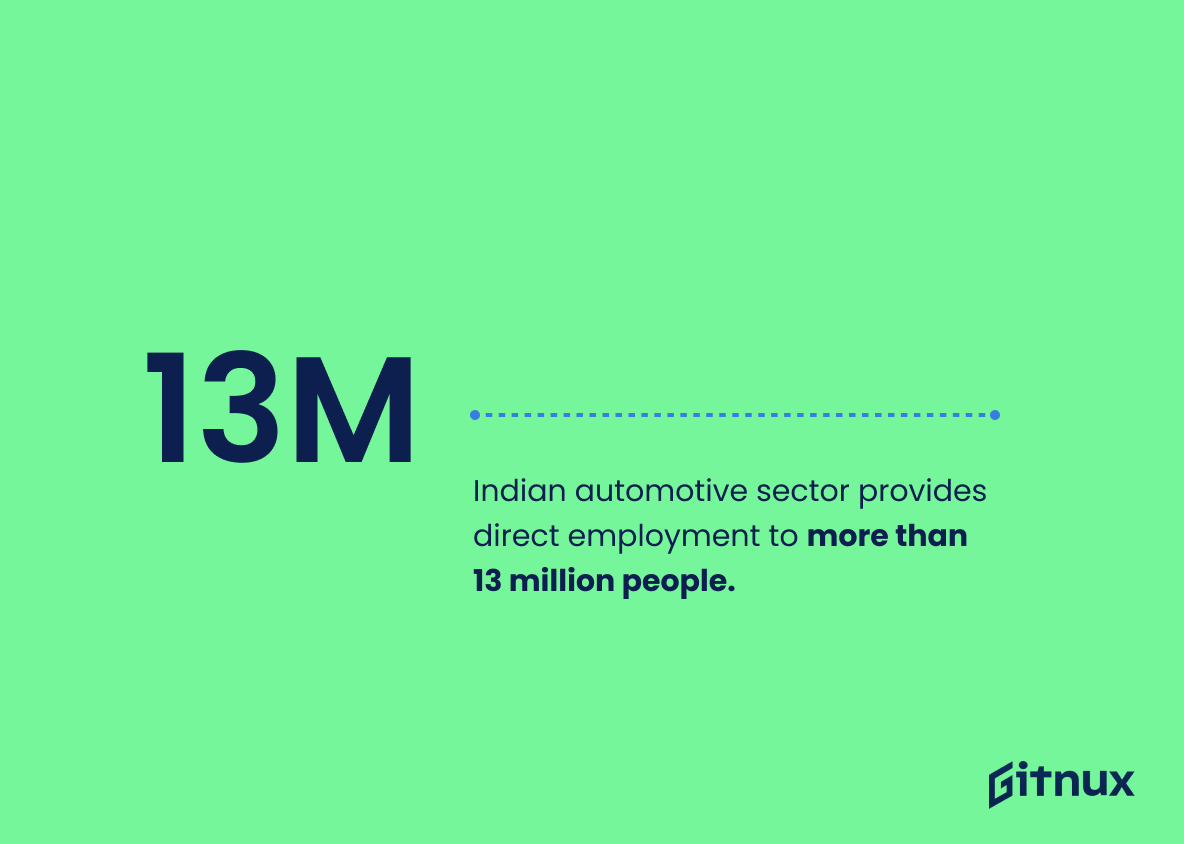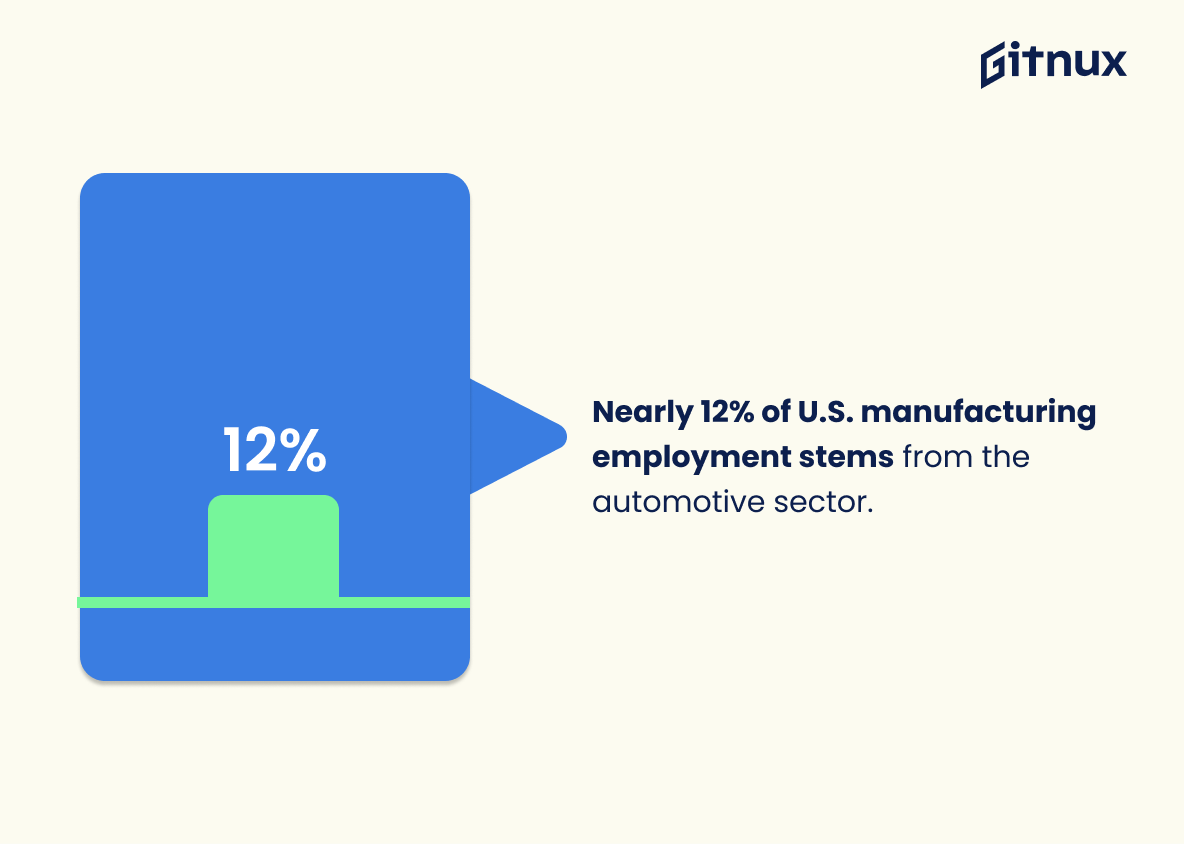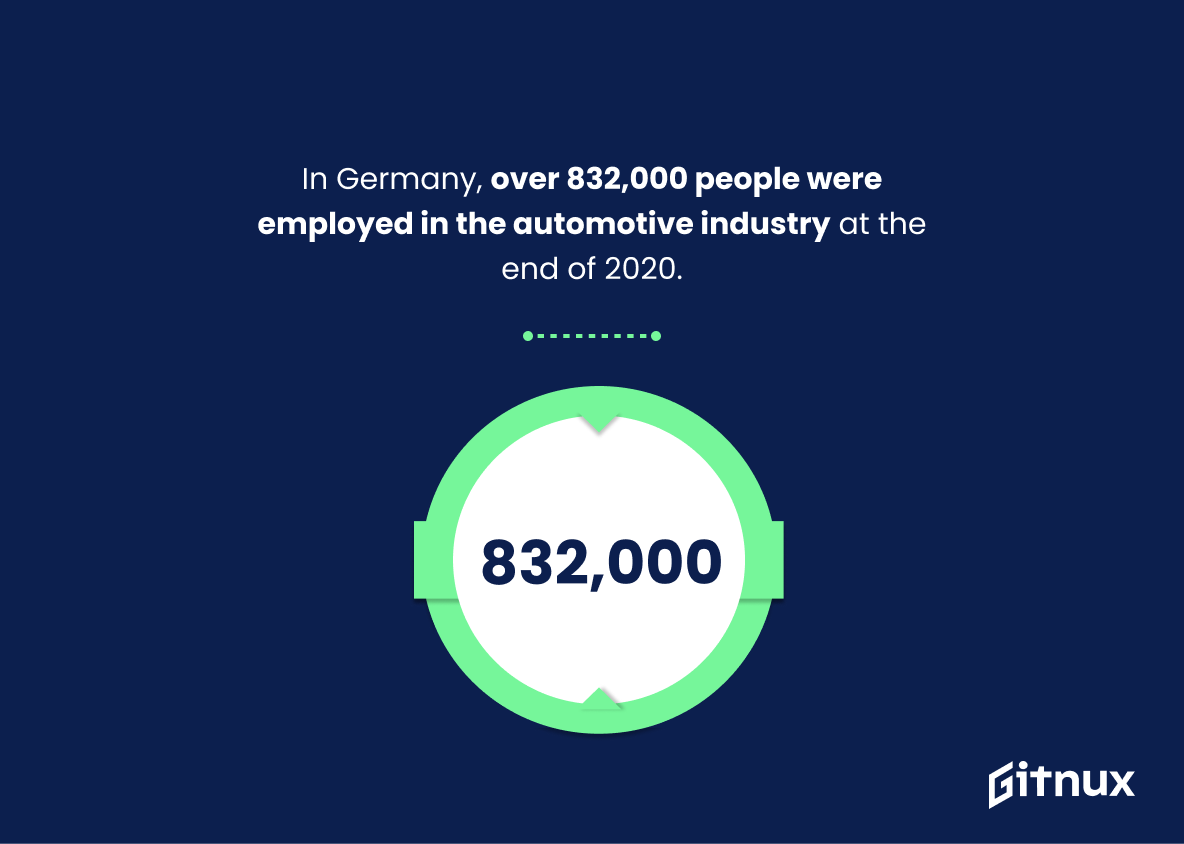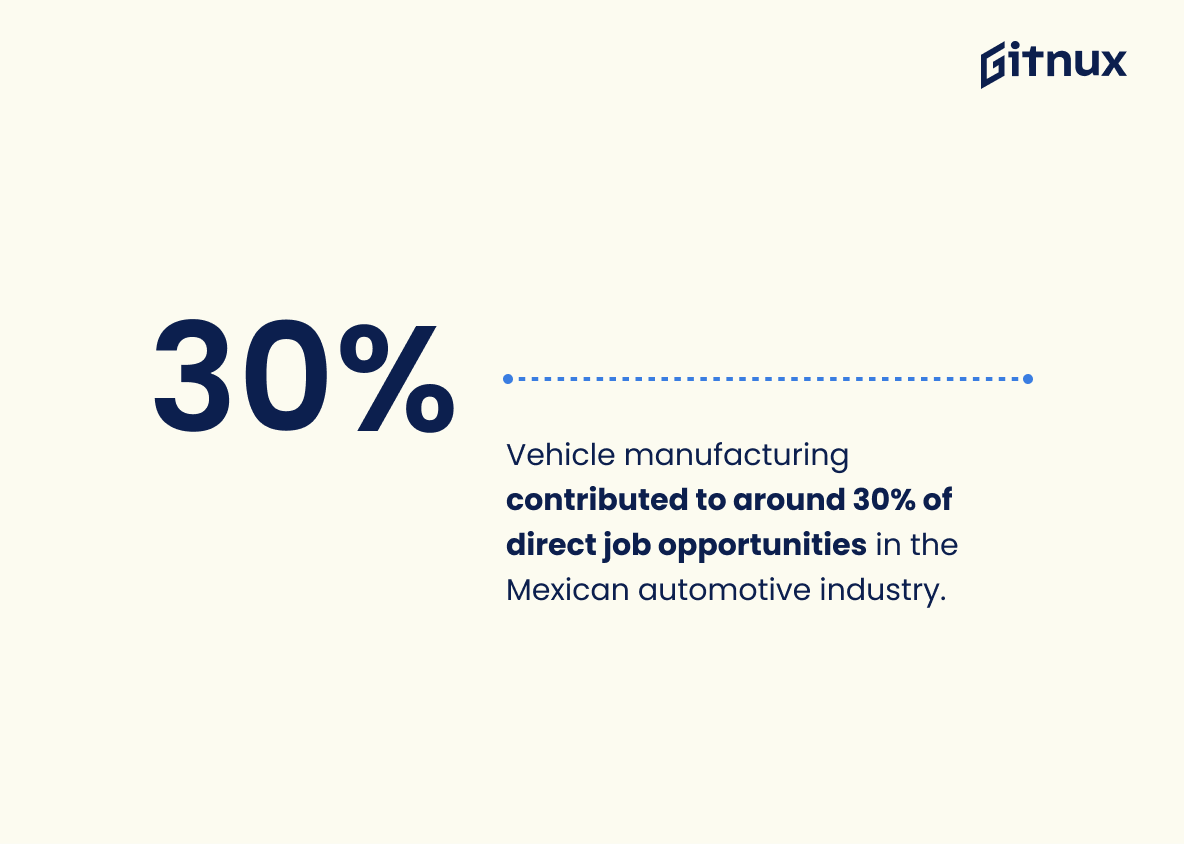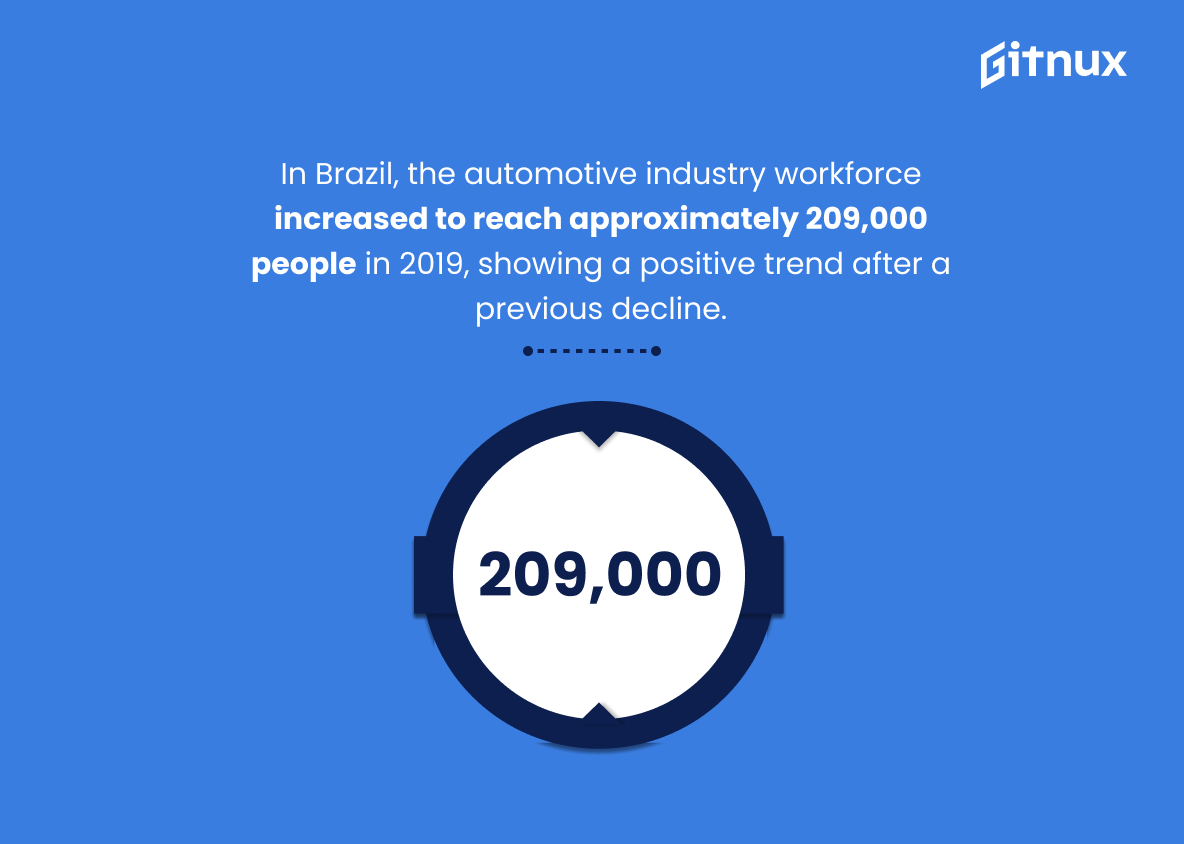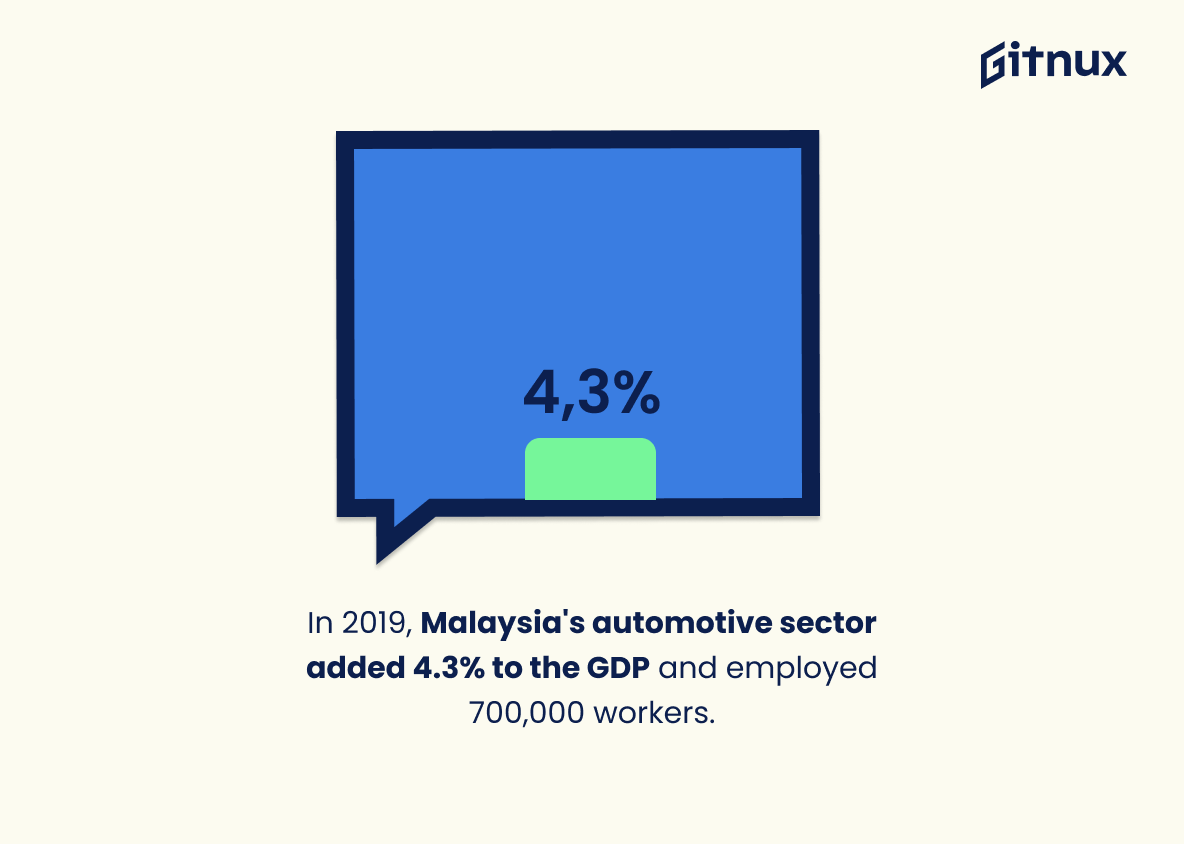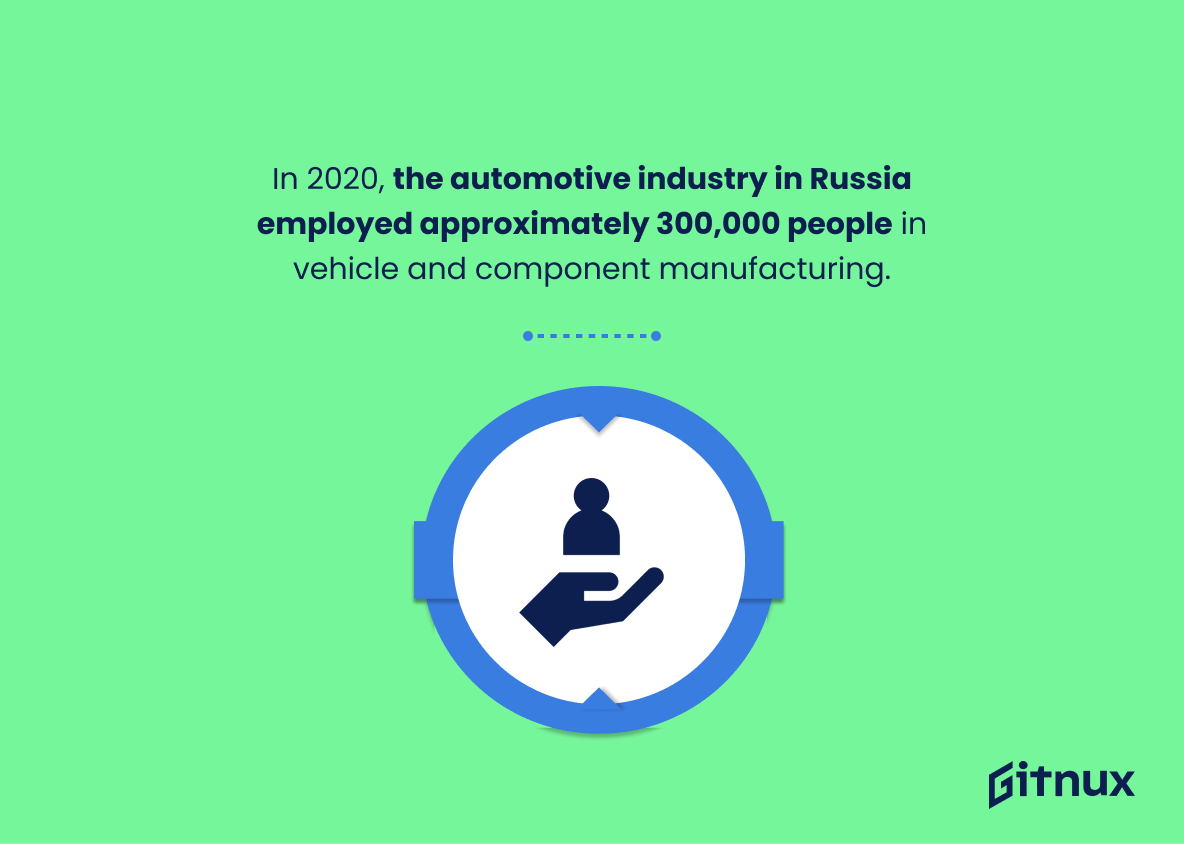The automotive industry is a major employer around the world, providing jobs to millions of people in both direct and indirect roles. This blog post will explore employment statistics from various countries across the globe, including the United States, European Union, Canada, India, Japan, China Mexico , Germany , Australia , New Zealand , South Korea France Malaysia Italy and Spain . We’ll look at how many people are employed directly or indirectly by each country’s automotive sector as well as any trends that may be emerging. By understanding these numbers we can gain insight into this important global industry and its impact on local economies.
This statistic is a powerful indicator of the automotive industry’s impact on the US private-sector workforce. It shows that the auto industry is a major employer in the US, providing jobs to a significant portion of the population. This statistic is especially important in the context of a blog post about Automotive Industry Employment Statistics, as it provides a snapshot of the industry’s current state and its importance to the US economy.
The automobile industry in the European Union directly provides around 2.6 million jobs.
This statistic is a powerful indicator of the importance of the automotive industry in the European Union. It shows that the industry is a major employer, providing a livelihood for millions of people. This is especially important in the current economic climate, where job security is a major concern for many. The statistic also highlights the need for governments to support the automotive industry, in order to ensure that these jobs remain secure and that the industry continues to thrive.
Automotive Industry Employment Statistics Overview
In 2020, motor vehicle and parts manufacturing supported 1.1 million jobs in the United States.
This statistic is a powerful reminder of the importance of the automotive industry in the United States. It highlights the fact that the industry is a major employer, providing jobs for 1.1 million people in 2020. This is a significant number, and it demonstrates the impact that the automotive industry has on the US economy. It also serves as a reminder of the importance of the industry in providing employment opportunities for Americans.
In 2018, motor vehicles and parts manufacturing accounted for 3% of all workers in Canada, employing around 550,000 people.
This statistic is a powerful indicator of the importance of the automotive industry in Canada. It shows that the industry is a major employer, providing jobs for over half a million people. This is a significant contribution to the Canadian economy, and it highlights the need for continued investment in the automotive sector to ensure its continued success.
Indian automotive sector provides direct employment to more than 13 million people.
This statistic is a powerful reminder of the immense impact the Indian automotive sector has on the country’s workforce. It highlights the sheer number of people who rely on the industry for their livelihoods, and the importance of ensuring that the sector remains strong and vibrant. It also serves as a reminder of the importance of providing quality employment opportunities to those who are employed in the automotive sector.
Nearly 12% of U.S. manufacturing employment stems from the automotive sector.
This statistic is a powerful indicator of the importance of the automotive sector in the U.S. manufacturing industry. It shows that the automotive sector is a major contributor to the employment of U.S. manufacturing workers, and that it is a vital part of the economy. This statistic is important to consider when discussing the automotive industry’s impact on employment and the economy as a whole.
In Germany, over 832,000 people were employed in the automotive industry at the end of 2020.
The fact that 832,000 people were employed in the automotive industry in Germany at the end of 2020 is a testament to the strength of the industry in the country. It shows that despite the economic downturn caused by the pandemic, the automotive industry in Germany was able to remain resilient and continue to provide employment opportunities for its citizens. This statistic is a powerful reminder of the importance of the automotive industry in Germany and its ability to weather difficult times.
Employment in Japan’s auto industry reached around 860,000 in 2020.
This statistic is a telling indication of the state of the automotive industry in Japan. It shows that despite the economic downturn caused by the pandemic, the industry has managed to remain resilient and maintain a relatively high level of employment. This is a testament to the strength of the Japanese automotive industry and its ability to weather difficult times.
At the end of 2019, the Chinese automobile industry employed approximately 5.8 million people, down from 6.1 million in 2018.
This statistic paints a stark picture of the state of the Chinese automobile industry: employment has decreased by 300,000 people in the span of a single year. This is a clear indication that the industry is facing a difficult period, and it is likely to have a significant impact on the lives of those affected.
Vehicle manufacturing contributed to around 30% of direct job opportunities in the Mexican automotive industry.
This statistic is a powerful indicator of the importance of vehicle manufacturing in the Mexican automotive industry. It highlights the fact that a significant portion of direct job opportunities in the sector are created by vehicle manufacturing, demonstrating the sector’s importance to the Mexican economy.
The automotive industry in the United Kingdom employs over 180,000 people directly in manufacturing and nearly 800,000 people across the wider automotive value chain.
This statistic is a powerful indicator of the importance of the automotive industry in the United Kingdom. It demonstrates the sheer number of people employed directly in manufacturing and across the wider automotive value chain, highlighting the industry’s significant contribution to the UK economy. It is a testament to the industry’s strength and resilience, and a reminder of the importance of automotive employment in the country.
In Brazil, the automotive industry workforce increased to reach approximately 209,000 people in 2019, showing a positive trend after a previous decline.
This statistic is a testament to the resilience of the automotive industry in Brazil, demonstrating that despite a previous decline, the workforce has been able to bounce back and reach a new high. This is an encouraging sign for those interested in the automotive industry in Brazil, as it shows that the industry is still a viable option for employment.
In 2020, more than 1,100 apprentices were trained in the automotive industry in New Zealand.
This statistic is a testament to the strength of the automotive industry in New Zealand, showing that it is still a viable option for those looking to pursue a career in the field. It also indicates that the industry is continuing to grow and develop, providing more opportunities for apprentices to gain the skills and knowledge they need to succeed. This is an encouraging sign for those looking to enter the automotive industry, as it shows that there are plenty of opportunities available.
The Malaysian automotive sector contributed 4.3% to the country’s GDP and employed around 700,000 workers in 2019.
This statistic is a powerful indicator of the importance of the automotive sector to the Malaysian economy. It shows that the automotive industry is a major contributor to the country’s GDP and provides employment to a significant number of people. This highlights the importance of the automotive industry in terms of economic growth and job creation, and is an important factor to consider when discussing automotive industry employment statistics.
Italy’s automotive industry employed around 170,000 people in 2019.
This statistic is a powerful indicator of the importance of Italy’s automotive industry. It shows that the industry is a major employer in the country, providing jobs for a significant portion of the population. This is especially important in the context of a blog post about Automotive Industry Employment Statistics, as it provides a concrete example of the industry’s impact on the economy.
Spain’s automotive industry provides employment to over 300,000 people directly and over two million people indirectly.
This statistic is a powerful testament to the importance of the automotive industry in Spain. It demonstrates the sheer number of people who rely on the industry for their livelihoods, both directly and indirectly. It is a reminder of the far-reaching impact the industry has on the Spanish economy and society.
In 2020, the automotive industry in Russia employed approximately 300,000 people in vehicle and component manufacturing.
This statistic is a powerful indicator of the importance of the automotive industry in Russia. It shows that the industry is a major employer, providing jobs to a significant portion of the population. This statistic is especially relevant in the context of a blog post about automotive industry employment statistics, as it provides a snapshot of the industry’s current state and its impact on the economy.
Conclusion
The automotive industry is a major employer across the world, with millions of people employed in vehicle and component manufacturing. In 2019, 4.1% of US private-sector workforce was employed by the auto industry while 2.6 million jobs were provided directly in European Union countries. The motor vehicle and parts manufacturing sector supported 1.1 million jobs in United States alone while 550,000 people were employed by this sector in Canada that same year. India’s automotive sector provides direct employment to more than 13 million people whereas nearly 12% of U.S.’s total manufacturing employment comes from its automotive sector itself; 832,000 employees worked for Germany’s automobile industry at the end 2020; Japan had around 860,000 workers working for their auto industries during 2020; 5800 thousand individuals were part of China’s automobile industry as on December 2019 but it decreased to 5600 thousand till December 2020 due to pandemic situation ; Vehicle Manufacturing contributed 30 % towards job opportunities within Mexican Automotive Industry , UK has 180k+ employees directly involved into Auto Industries & 800K+ indirectly associated with it . Brazil saw an increase up to 209K Employees after decline previously , Australia employs 40 K People related with Auto Sector & New Zealand trained 1100 Apprentices under this domain . South Korea witnessed 326 K Employment rate which declined since 2015 where France had 400 k + Employed personnel last year & Malaysia recorded 700 K Workers alongwith contribution upto 4 % GDP growth rate . Italy reported 170 k Employees whereas Spain accounted 300k Directly Associated Jobs plus 2 Million Indirectly Involved ones
In conclusion we can say that despite some fluctuations due Covid 19 Pandemic Situation globally , Automobile Industry still remains one among top employers providing livelihood opportunity worldwide
References
0. – https://www.bts.gov
1. – https://www.selectusa.gov
2. – https://www.investindia.gov.in
3. – https://www.export.gov
4. – https://www.mckinsey.com
5. – https://www.mito.org.nz
6. – https://www.japantimes.co.jp
7. – https://www.ceicdata.com
8. – https://www.smmt.co.uk
9. – https://www.home.kpmg
10. – https://www.vda.de
11. – https://www.ic.gc.ca
12. – https://www.acea.be
13. – https://www.hannovermesse.de
14. – https://www.americanprogress.org
15. – https://www.statista.com


